
Only 430 posts. I think that puts me at less than $0.40 a post. 28 months would come out to less than $4 a month.
 |

C:\oracle\bin;Hmmm...I wonder if having the database path first is causing this? Why would it though? OBIEE doesn't have it's own tnsnames.ora...so it shouldn't, right? I moved c:\oracle\bin behind the final OBIEE path. Guess what? I was able to connect.
C:\OracleBI\server\Bin;
C:\OracleBI\web\bin;
C:\OracleBI\web\catalogmanager;
C:\OracleBI\SQLAnywhere;
C:\Program Files\Java\jdk1.6.0_17\bin;
%SystemRoot%\system32;
%SystemRoot%;
%SystemRoot%\System32\Wbem

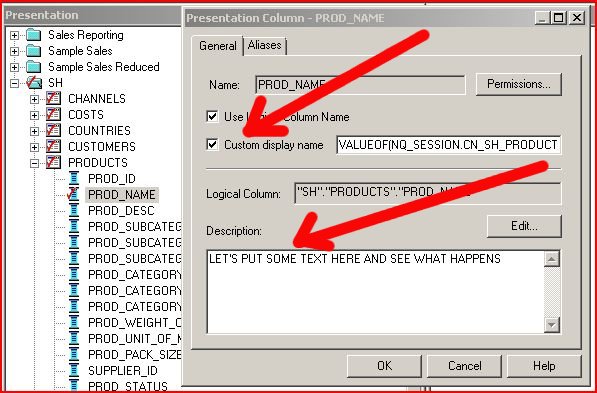
strBuf.append(this.getSelectHtml() + " title='" + saw.encodeHTMLAttrValue(this.getToolTip()) + "'>"I know enough to be dangerous naturally.
header=[Description] body=[some text goes here]So just add those to the javascript function above and let OBIEE, with it's call to saw.encodeHTMLAttrValue(this.getToolTip()), do its work.
<script language="JavaScript" src="res/b_mozilla/browserdom.js"></script>How to add that to the template is the hard part (for me anyway).

<?xml version="1.0" encoding="utf-8"?>Note that the first 3 attempts are commented out, so I only really need that last WebMessageTable entry.
<WebMessageTables>
<!--WebMessageTable lang="en-us" system="CriteriaTemplates" table="Messages">
<WebMessage name="kuiFunctionSelectorHead">
<HTML><script language="javascript" src="/analytics/res/b_mozilla/boxover.js"/></HTML>
</WebMessage>
</WebMessageTable>
<WebMessageTable name="deliversTemplates" translate="no">
<WebMessage name="kuiDeliversIBotEditorHead">
<HTML><script language="javascript" src="/analytics/res/b_mozilla/boxover.js"/></HTML>
</WebMessage>
</WebMessageTable>
<WebMessageTable lang="en-us" system="CommonUITemplates" table="Messages">
<WebMessage name="kuiBrowserDialogHead">
<HTML><script language="javascript" src="/analytics/res/b_mozilla/boxover.js"/></HTML>
</WebMessage>
</WebMessageTable-->
<WebMessageTable lang="en-us" system="TreeViewSys" table="Messages">
<WebMessage name="kmsgTreeImageMap">
<HTML><script language="JavaScript" src="res/b_mozilla/boxover.js"/></HTML>
</WebMessage>
</WebMessageTable>
</WebMessageTables>
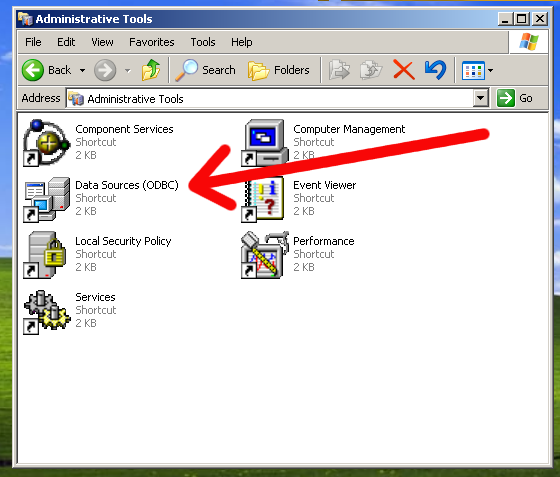
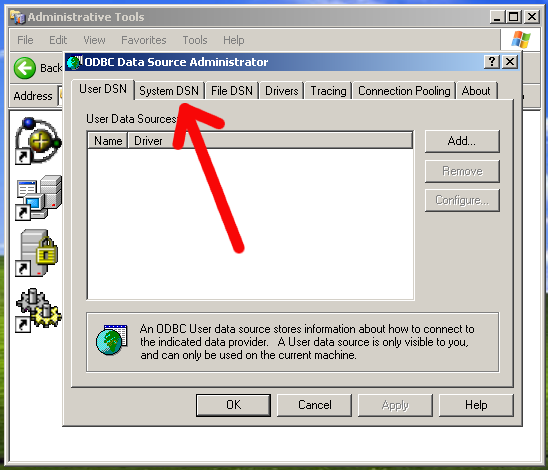
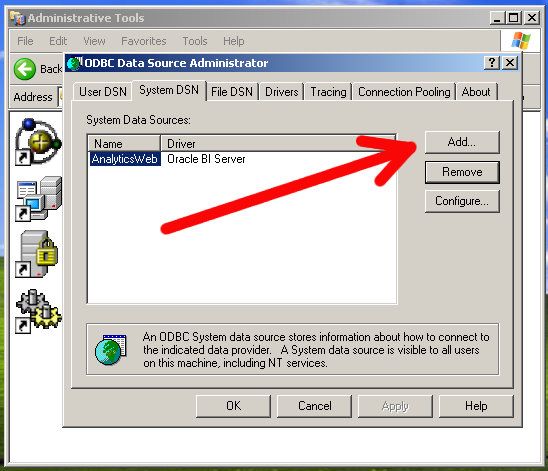
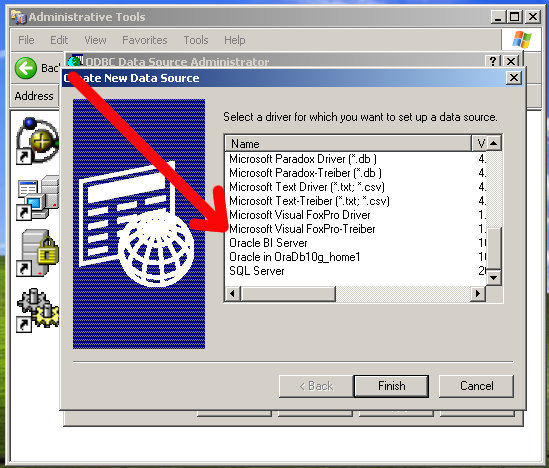
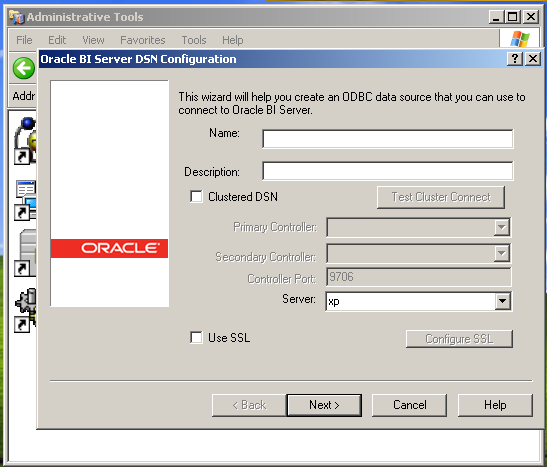
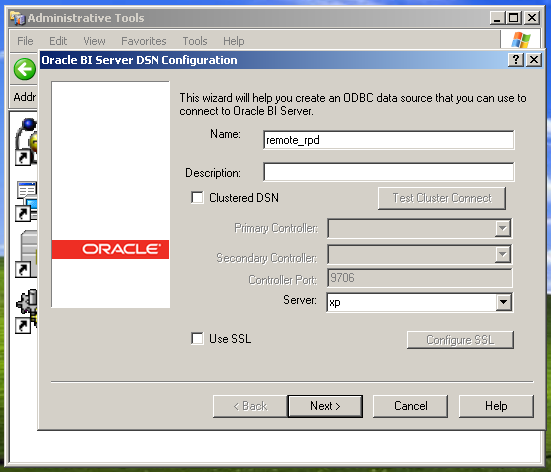
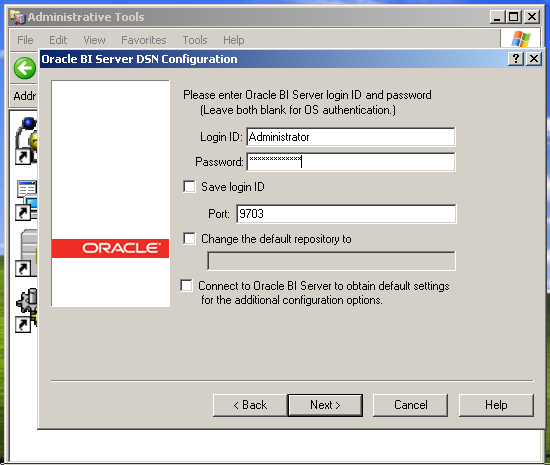
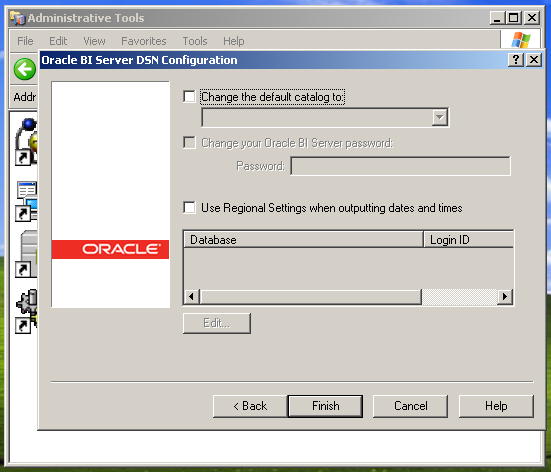



chet@cdj-laptop:~$ vpncI guessed at the first 2, username and password are no brainers...even for me.
Enter IPSec gateway address: vpn.oraclenerd.com
Enter IPSec ID for vpn.oraclenerd.com: something
Enter IPSec secret for something@vpn.oraclenerd.com:
Enter username for vpn.oraclenerd.com: chet
Enter password for chet@vpn.oraclenerd.com:
vpnc: unknown host `vpn.oraclenerd.com'
(configfile only option)So I created a file .vpnconfig and put it in the root directory (I was just testing). Here are the contents:
your group password (cleartext)
conf-variable: IPSec secret
(configfile only option)
your group password (obfuscated)
conf-variable: IPSec obfuscated secret
IPSec gateway vpn.oraclenerd.comThen I ran
IPSec ID NERDVPN
IPSec obfuscated secret ASDFLKJUW3ROUOIUALKJQAEWROIR3379273AFJI;LKQJ3E
Xauth username chet
root@cdj-laptop:/home/chet# vpnc /.vpnconfigVoila! I'm connected. Time to do some work.
Enter password for chet@vpn.oraclenerd.com:
VPNC started in background (pid: 3702)...
chmod ugo+rwx / -Rmany of you would be very angry with me for suggesting such a thing...
DECLAREWhich would of course would give me this:
l_count INTEGER;
l_sql VARCHAR2(200);
BEGIN
FOR i IN ( SELECT table_name
FROM dba_tables
WHERE owner = 'SYSTEM' )
LOOP
l_sql := 'SELECT COUNT(*) INTO :1 FROM SYSTEM.' || i.table_name;
EXECUTE IMMEDIATE l_sql USING l_count, i.table_name;
dbms_output.put_line( i.table_name || '-' || l_count );
END LOOP;
END;
/
DECLAREOnly now did I realize a fatal flaw with that...I was trying to bind the variable into the string, which would obviously never work.
*
ERROR at line 1:
ORA-01745: invalid host/bind variable name
ORA-06512: at line 10
SET SERVEROUTPUT ONDone.
DECLARE
l_count INTEGER;
l_table VARCHAR2(61);
BEGIN
FOR i IN ( SELECT table_name
FROM dba_tables
WHERE owner = 'SYSTEM' )
LOOP
l_table := 'SYSTEM.' || i.table_name;
EXECUTE IMMEDIATE 'SELECT COUNT(*) FROM ' || l_table INTO l_count;
dbms_output.put_line( l_table || '-' || l_count );
END LOOP;
END;
/
...snip
SYSTEM.LOGMNR_USER$-0
SYSTEM.LOGMNR_OBJ$-0
SYSTEM.LOGMNR_DICTIONARY$-0
SYSTEM.LOGMNR_DICTSTATE$-0
SYSTEM.OL$NODES-0
SYSTEM.OL$HINTS-0
SYSTEM.OL$-0
PL/SQL procedure successfully completed.
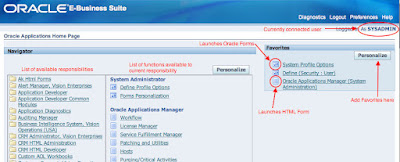

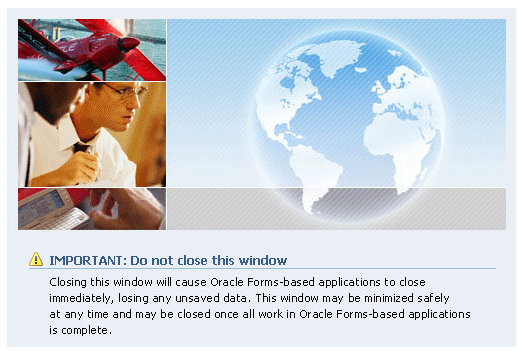
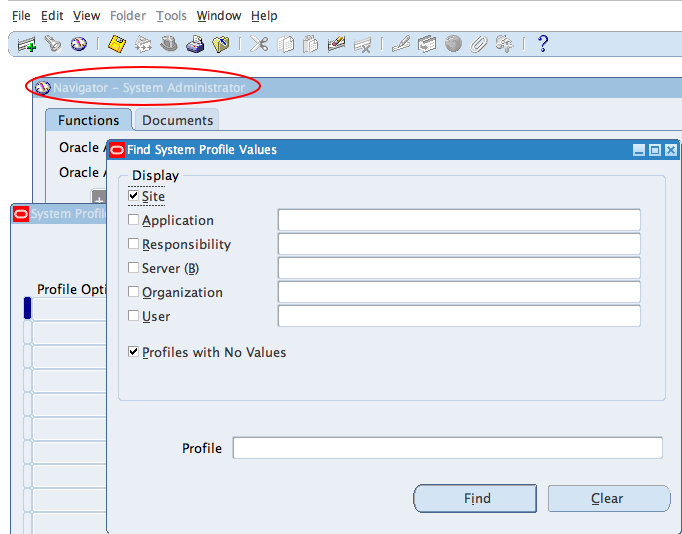

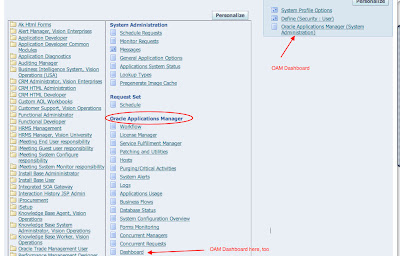
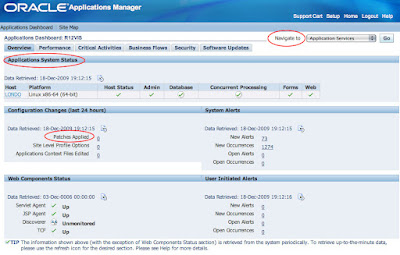


Intel's IT business value (ITBV) program has shifted our IT investment decision making process to a customer-focused, data-driven model that demonstrates the impact of IT on Intel’s bottom line.Yes! Right on! Isn't that what we all do?! I'd argue that if we all did this even half as well as Intel we wouldn't have as many questions about "finance killing IT" or "IT costing too much" or "IT not serving business needs."


error while loading shared libraries:The only errata I've found is that mine was a 32 bit system and not a 64 bit system...but who cares? It works.
libdb.so.2: cannot open shared object file: No such file or directory


